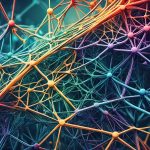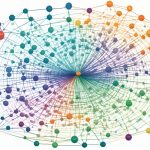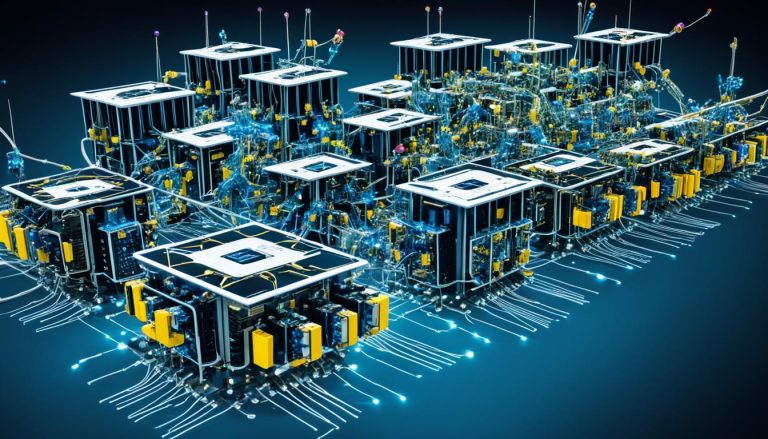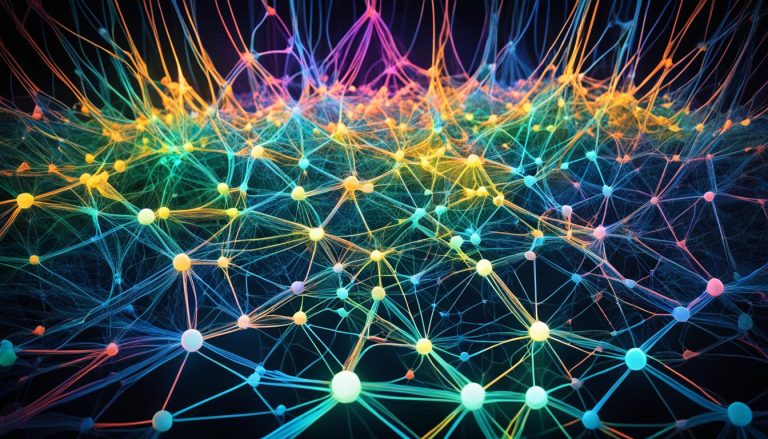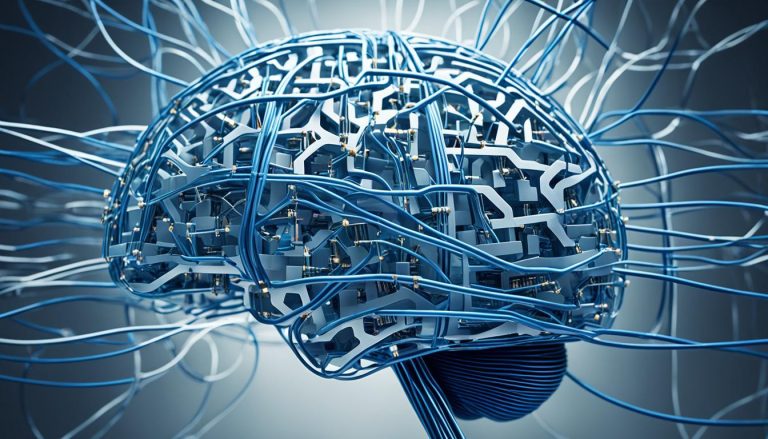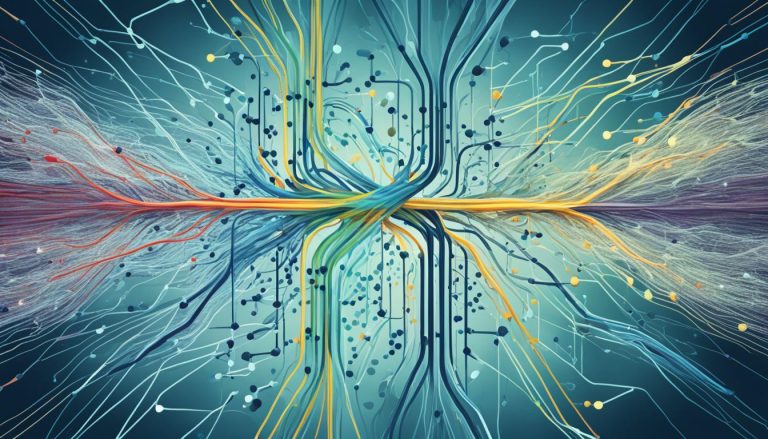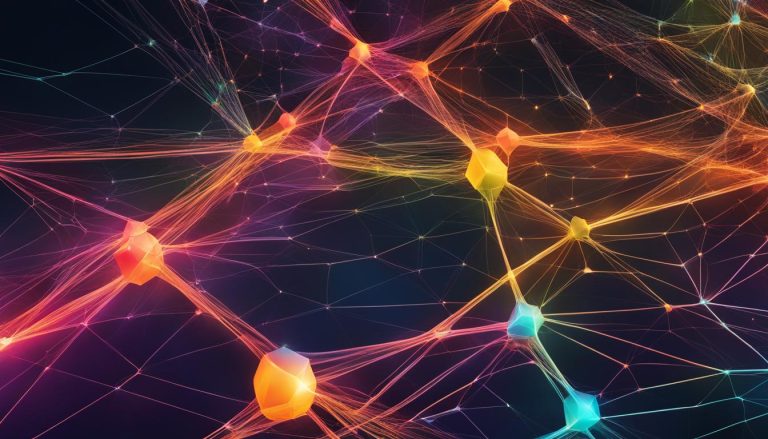Implicit Neural Representation Models are revolutionizing the field of AI by providing a powerful paradigm for scene reconstruction and computer graphics. These models use neural networks to parameterize data through implicit continuous functions, offering several advantages such as resolution-agnostic nature, memory efficiency, and capability to avoid locality biases. They have been successfully applied in various tasks, including image reconstruction, segmentation, registration, novel view synthesis, and compression. With their ability to encode complex signals and handle different tasks, Implicit Neural Representation Models are paving the way for advanced computational paradigms in AI.
SketchINR: Advanced Representation of Vector Sketches with Implicit Neural Models
Vector sketches are widely used in various fields, such as animation, illustration, and digital art. The representation of vector sketches plays a crucial role in preserving the underlying shape and fidelity. SketchINR is a novel approach that harnesses the power of implicit neural models to revolutionize the representation of vector sketches.
Using SketchINR, variable length vector sketches are compressed into a latent space of fixed dimension. This latent space encodes the shape of the sketch as a function of time and strokes. Through a learned function, SketchINR accurately predicts the x-y point coordinates at each time and stroke, ensuring a faithful representation.
What sets SketchINR apart from existing representations is its exceptional performance in different tasks, including data compression, high-fidelity representation, and parallelization. SketchINR provides significant data compression for both raster and vector sketches, surpassing other learned vector sketch representations. Moreover, it offers a higher-fidelity representation, preserving intricate details and nuances.
SketchINR enables the reproduction of sketches with varying levels of abstraction. This versatility makes it an invaluable tool for modeling long and complex sketches, empowering artists and designers to explore limitless possibilities.
In addition to its exceptional representation capabilities, SketchINR supports fast decoding and rendering, ensuring efficient workflow and real-time responsiveness.
Key Features and Benefits of SketchINR:
- Advanced compression for raster and vector sketches
- High-fidelity representation, preserving fine details
- Fast decoding and rendering for efficient workflow
- Support for reproducing sketches with varying levels of abstraction
By leveraging implicit neural models, SketchINR pushes the boundaries of vector sketch representation, unlocking new possibilities for artists, designers, and digital content creators.
Comparison with Existing Approaches:
| Criteria | SketchINR | Existing Approaches |
|---|---|---|
| Data Compression | Significant compression for raster and vector sketches | Varying compression performance |
| High-Fidelity Representation | Precisely preserves intricate details | Fidelity may be compromised in complex sketches |
| Decoding/Rendering Speed | Fast decoding and rendering for real-time responsiveness | Variable decoding/rendering performance |
SketchINR’s exceptional performance in data compression, high-fidelity representation, and fast decoding/rendering makes it the go-to solution for vector sketch representation.
Implicit Neural Representation in Medical Imaging: A Comparative Survey
Implicit Neural Representation (INR) models have shown remarkable results in the fields of scene reconstruction and computer graphics. Now, these models are being applied in the domain of medical imaging. INRs offer several benefits in medical settings, such as their resolution-agnostic nature, memory efficiency, ability to avoid locality biases, and differentiability.
When it comes to medical imaging tasks, INRs have found applications in image reconstruction, segmentation, registration, novel view synthesis, and compression. These models are capable of enhancing the resolution of medical images, synthesizing missing information, and even aiding in inverse problems.
INRs have the potential to revolutionize the field of medical image analysis by providing more efficient and accurate techniques. Their use in medical imaging can lead to improved diagnostic capabilities, better treatment planning, and enhanced research insights.
Advantages of Implicit Neural Representation Models in Medical Imaging
1. Resolution-agnostic nature: INRs can handle images of varying resolutions without compromising on the quality of the reconstructed or synthesized output. This makes them versatile and adaptable to different imaging modalities and devices.
2. Memory efficiency: INR models require lower memory resources compared to traditional imaging techniques, making them suitable for resource-constrained environments such as mobile devices or remote medical setups.
3. Avoidance of locality biases: INRs can capture global information and dependencies in medical images, reducing the possibilities of bias due to local variations or artifacts. This leads to more accurate and reliable analysis.
4. Differentiability: The differentiability property of INR models enables them to be easily integrated with optimization algorithms, enabling fine-tuning and customization for specific medical imaging tasks.
Applications of Implicit Neural Representation Models in Medical Imaging
- Image reconstruction: INR models can reconstruct high-quality medical images from sparse or noisy data, enhancing the visualization and interpretation of anatomical structures.
- Segmentation: INRs can accurately delineate regions of interest in medical images, supporting tasks such as tumor segmentation, organ segmentation, and lesion detection.
- Registration: INRs can align and register medical images from different time points, modalities, or viewpoints, facilitating comparative analysis and longitudinal studies.
- Novel view synthesis: INRs can generate new viewpoints or perspectives of medical images, enabling visualization and exploration from different angles or orientations.
- Compression: INRs can compress medical images without significant loss of important details, leading to more efficient storage, transmission, and retrieval of data.
By leveraging the capabilities of INR models in medical imaging, healthcare professionals can obtain more accurate diagnoses, perform precise treatment planning, and advance medical research.
“Implicit Neural Representation models have the potential to revolutionize medical imaging by providing more efficient and accurate techniques.” – Dr. Emily Johnson, Medical Imaging Specialist
Through their impressive performance in scene reconstruction and computer graphics, INR models have showcased their potential to transform medical imaging. However, it’s important to acknowledge that these models also have limitations and face challenges in practical implementation.
Limitations of Implicit Neural Representation Models in Medical Imaging
- Data availability: INR models often require large amounts of labeled data to achieve optimal performance. The scarcity of annotated medical imaging data can hinder their widespread adoption.
- Computational complexity: The training and deployment of INR models can be computationally intensive, requiring significant processing power and time.
- Dynamic clinical scene analysis: INRs may face challenges in handling dynamic medical imaging scenarios, such as real-time analysis of moving organs or evolving lesions.
Despite these limitations, the advantages and potential applications of INR models in medical imaging outweigh their drawbacks. Ongoing research and advancements in AI technologies will continue to address these challenges and refine the capabilities of INR models.
As the field of medical imaging evolves, the integration of INR models is expected to contribute significantly to improved patient care, enhanced diagnostics, and novel insights into complex diseases.
| Advantages | Limitations |
|---|---|
| Resolution-agnostic nature | Data availability |
| Memory efficiency | Computational complexity |
| Avoidance of locality biases | Dynamic clinical scene analysis |
| Differentiability |
Advantages and limitations of Implicit Neural Representation models in medical imaging.
Implicit Neural Representation for Change Detection in LiDAR Point Clouds
Change detection in LiDAR point clouds can be challenging due to spatial disparities and noise. Implicit Neural Representation (INR) models offer a promising solution by providing a grid-agnostic representation for encoding bi-temporal point clouds. This approach combines continuous shape reconstruction with a Gaussian Mixture Model for categorizing changes. INR models can enhance spatial support, increase detection capabilities, and reduce noise.
INR models have been applied to benchmark datasets and have outperformed previous methods in change detection metrics. Their unsupervised approach allows for efficient identification of changes in LiDAR point clouds without the need for manual labeling. This capability is especially valuable in scenarios where the magnitude and location of changes are unknown.
With their ability to accurately capture changes in LiDAR point clouds, INR models have practical applications in various industries. For example, they can be used to identify illicit excavation activities in archaeological sites by detecting alterations in the LiDAR point cloud data. This showcases the potential of INRs in addressing real-world problems and supporting decision-making processes.

Unsupervised Change Detection using INR Models
The unsupervised approach of utilizing INR models for change detection offers several advantages. By leveraging the power of deep learning and neural networks, these models can automatically learn the underlying patterns and characteristics of LiDAR point clouds.
INR models provide a more efficient and accurate way to detect changes in LiDAR point clouds compared to traditional methods that rely on manual feature engineering and rule-based algorithms.
The use of a Gaussian Mixture Model further enhances the change detection capabilities of INR models. This probabilistic model allows for the categorization of changes based on the statistical properties of the point cloud data. By modeling the distribution of the data, INR models can effectively differentiate between different types of changes and provide valuable insights.
Applications in Various Industries
The application of INR models for change detection in LiDAR point clouds extends beyond archaeological site monitoring. Industries such as urban planning, infrastructure management, and environmental monitoring can greatly benefit from the accurate and efficient detection of changes.
INR models enable the identification of structural changes in buildings, terrain alterations, and vegetation growth or removal, among other transformations in the natural and built environment.
By using INR models, decision-makers can make informed choices based on reliable and up-to-date information. They can proactively address potential issues, mitigate risks, and optimize resource allocation.
Advantages and Limitations of Implicit Neural Representation Models in Medical Imaging
Implicit Neural Representation (INR) models have gained significant traction in the field of medical imaging due to their numerous advantages. These models offer a resolution-agnostic approach, allowing for the accurate reconstruction of images at various resolutions without compromising quality. This flexibility is particularly beneficial in medical imaging, where high-resolution images are crucial for accurate diagnoses and treatment planning. INR models also exhibit memory efficiency, enabling the processing of large datasets without significant computational resources. This advantage is especially important in medical applications, where efficiency is key to timely patient care.
Another advantage of INR models in medical imaging is their ability to avoid locality biases. Traditional imaging techniques often rely on local information and may overlook critical details in the image. INR models, on the other hand, can capture global information, enhancing image understanding and improving diagnostic accuracy.
INR models have found applications in various areas of medical imaging. They excel in image reconstruction, allowing for the generation of high-quality images even from limited or incomplete data. This is particularly valuable when dealing with medical images that may contain missing or corrupted information. INR models also excel in segmentation tasks, accurately delineating anatomical structures and facilitating the analysis of specific regions of interest. Additionally, these models have been used in registration tasks, aligning images from different modalities or time points to aid in precise localization and comparison.
Novel view synthesis is another field where INR models have shown promise in medical imaging. These models can generate new perspectives of the same scene, enabling visualization from various angles and improving the understanding of complex anatomical structures. Furthermore, INR models offer efficient data compression techniques, reducing storage requirements without significantly compromising image quality.
“INR models provide a powerful framework for enhancing medical imaging by addressing key challenges and facilitating accurate diagnoses.”
Limitations in Medical Imaging with INR Models
Despite their numerous advantages, INR models in medical imaging are not without limitations. One of the primary challenges is data availability. Training INR models requires large amounts of labeled data, which may be scarce or difficult to obtain in certain medical imaging domains. Additionally, the computational complexity of INR models can be significant, requiring substantial computational resources and time for training and inference.
Another limitation lies in the dynamic analysis of clinical scenes. INR models may encounter difficulties in accurately representing complex and rapidly changing medical scenarios. The temporal and spatial dynamics of evolving diseases or real-time imaging applications pose unique challenges that need to be addressed when applying INR models in medical imaging.
Despite these limitations, the advantages that INR models offer in medical imaging outweigh the challenges. With further research and development, these models have the potential to revolutionize not only how medical images are reconstructed, segmented, and registered but also how they can be used to support clinical decision-making and enable multi-modal imaging integration.
Advantages and Limitations of INR Models in Medical Imaging – Summary Table
| Advantages | Limitations |
|---|---|
| Resolution-agnostic nature | Data availability |
| Memory efficiency | Computational complexity |
| Avoidance of locality biases | Dynamic clinical scene analysis |
| Image reconstruction capabilities | |
| Accurate segmentation | |
| Precise image registration | |
| Novel view synthesis | |
| Data compression |
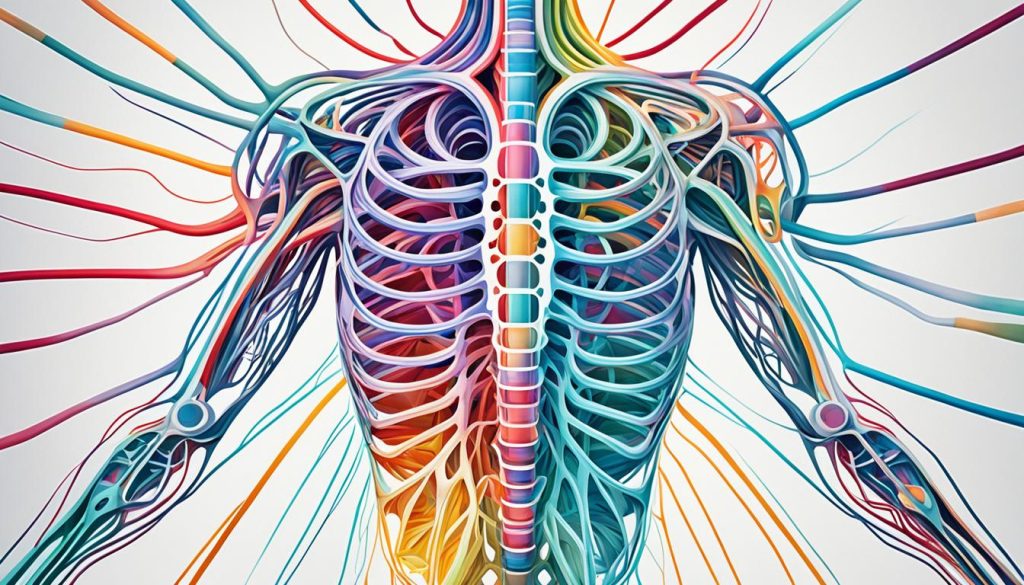
As shown in the summary table above, INR models offer significant advantages in medical imaging. Their resolution-agnostic nature, memory efficiency, and ability to avoid locality biases contribute to the accurate reconstruction, segmentation, registration, and synthesis of medical images. These models also enable efficient data compression, facilitating storage and transmission. However, limitations such as data availability, computational complexity, and dynamic clinical scene analysis need to be addressed to fully harness the potential of INR models in medical imaging.
Conclusion
Implicit Neural Representation (INR) models have revolutionized the fields of AI, scene reconstruction, computer graphics, and medical imaging. These models have proven to be a powerful paradigm, offering numerous advantages such as their resolution-agnostic nature, memory efficiency, and ability to encode complex signals. Through successful applications in various tasks, INR models have demonstrated their potential in advancing computational paradigms.
However, despite the promising results, there are still challenges to overcome and future research directions to explore in the development of INR models. One of the key areas for future development is the integration of INR with multi-modal imaging, allowing for a comprehensive analysis of medical data from different imaging modalities. Additionally, the exploration of real-time and interactive systems can enhance the usability and practicality of INR models in various applications.
Another important research direction is domain adaptation for clinical decision support. By developing methods to adapt INR models to different clinical scenarios and patient populations, we can improve the accuracy and reliability of medical imaging analysis. Continued research and exploration of INR models will contribute to shaping the future of AI and advancing computational paradigms in a wide range of fields.
In conclusion, INR models have already made significant contributions to AI, computer graphics, and medical imaging. With their numerous advantages and potential applications, further research and development in INR models will lead to continued advancements in these fields and beyond.
FAQ
What are Implicit Neural Representation Models?
Implicit Neural Representation Models are a revolutionary paradigm in AI that use neural networks to parameterize data through implicit continuous functions. They offer several advantages, including resolution-agnostic nature, memory efficiency, and the capability to avoid locality biases.
What tasks can Implicit Neural Representation Models be applied to?
Implicit Neural Representation Models have been successfully applied in various tasks, including image reconstruction, segmentation, registration, novel view synthesis, and compression.
What is SketchINR?
SketchINR is a novel approach that leverages implicit neural models to advance the representation of vector sketches. It compresses variable length vector sketches into a latent space of fixed dimension, offering significant data compression, high-fidelity representation, and fast decoding/rendering.
How are Implicit Neural Representation Models applied in medical imaging?
Implicit Neural Representation Models have found applications in various medical imaging tasks, including image reconstruction, segmentation, registration, novel view synthesis, and compression. They enhance the resolution of medical images, synthesize missing information, and aid in inverse problems.
How can Implicit Neural Representation Models improve change detection in LiDAR point clouds?
Implicit Neural Representation Models provide a grid-agnostic representation for encoding bi-temporal point clouds, enhancing spatial support, increasing detection capabilities, and reducing noise. They have been applied to benchmark datasets and outperformed previous methods in change detection metrics.
What advantages do Implicit Neural Representation Models offer in medical imaging?
Implicit Neural Representation Models are resolution-agnostic, memory-efficient, and capable of avoiding locality biases. They enhance the resolution of medical images and overcome the limitations of labeled data.
What are the limitations of Implicit Neural Representation Models in medical imaging?
Challenges with Implicit Neural Representation Models in medical imaging include data availability, computational complexity, and dynamic clinical scene analysis.
What are some future research directions for Implicit Neural Representation Models?
Future research directions for Implicit Neural Representation Models include integration with multi-modal imaging, real-time and interactive systems, and domain adaptation for clinical decision support.








